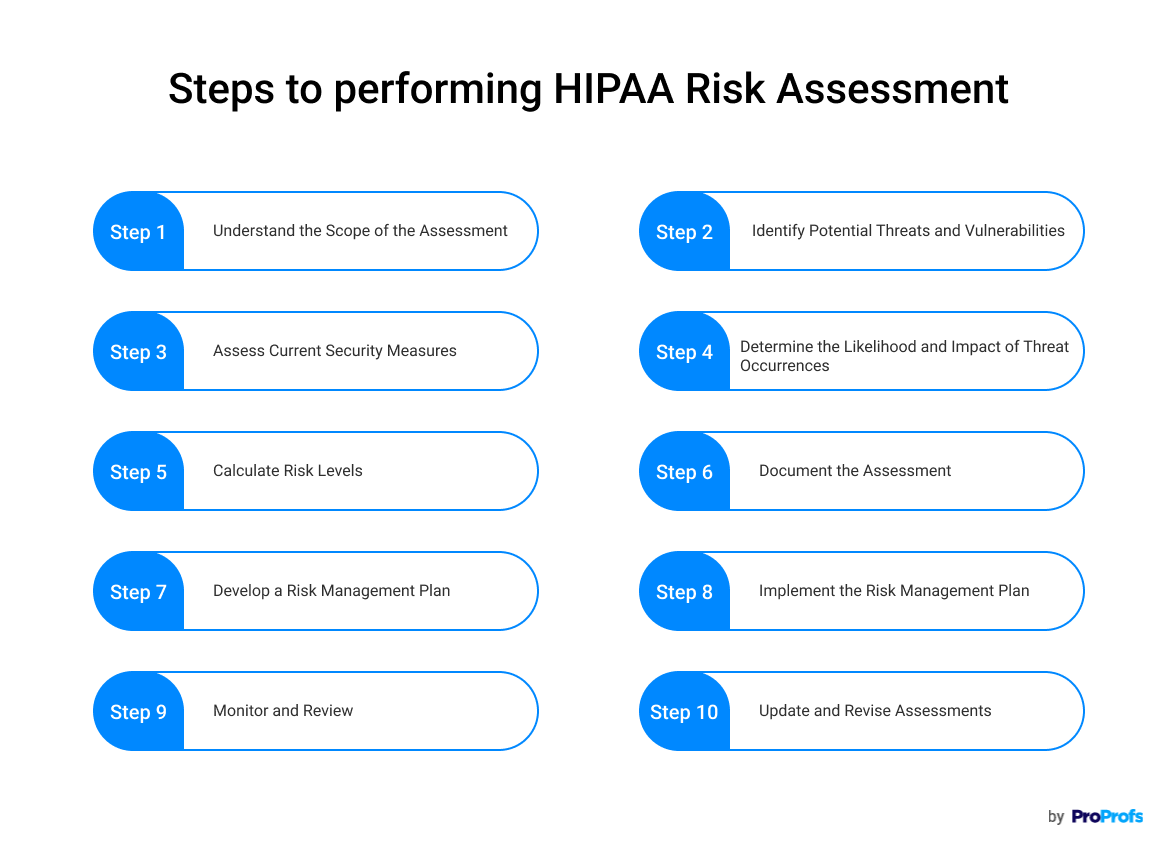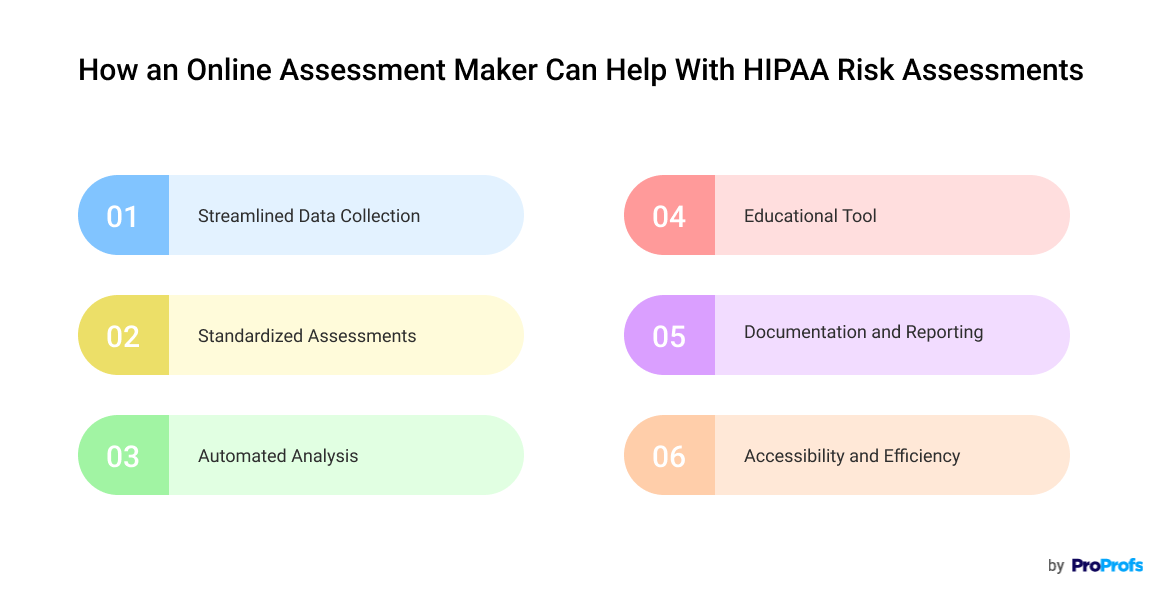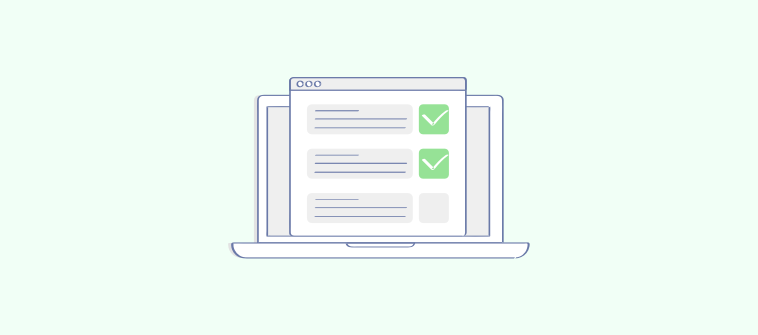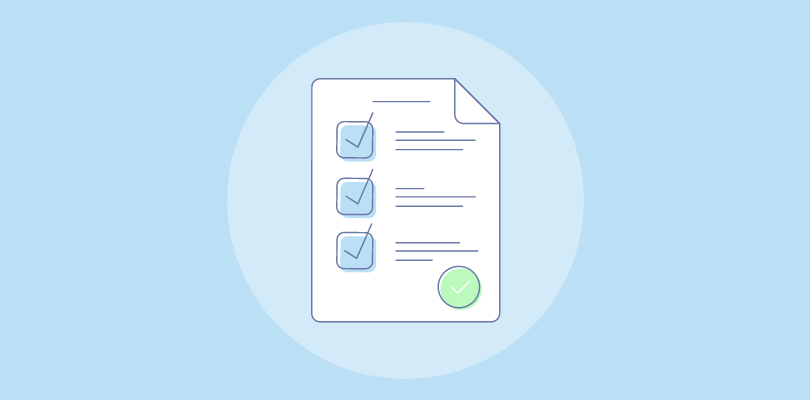In the ever-changing world of healthcare cybersecurity, staying on top of HIPAA compliance can feel like a never-ending game of whack-a-mole.
In fact, for over a decade, I have been researching this subject and have experienced the arrival of online assessment tools, which have streamlined the HIPAA assessment process.
Understanding and implementing these assessments may seem daunting, but with the right approach, it’s entirely manageable.
So, here’s a detailed guide to help you understand HIPAA risk assessment, how to create it, and the role of online HIPAA assessment tools.
Let’s get started.
What Is a HIPAA Risk Assessment?
Before we get an idea about risk assessments, it’s important to understand to know the process of creating an assessment. Here’s a short video for you:
And now, let’s move on to our main topic.
A HIPAA risk assessment is a critical process for entities handling protected health information (PHI) to ensure compliance with the Health Insurance Portability and Accountability Act (HIPAA). This comprehensive evaluation helps identify vulnerabilities in the security of PHI and assess potential risks from unauthorized access, use, or disclosure.
Healthcare providers, insurance companies, and their business associates must perform these assessments regularly to manage risks effectively and safeguard patient data.
For example, a HIPAA Risk Assessment might reveal that an outdated electronic health record system could be susceptible to breaches, prompting an upgrade to more secure technologies.
Statistics from the U.S. Department of Health and Human Services indicate that entities that conduct thorough risk assessments and address discovered vulnerabilities significantly reduce their chances of experiencing data breaches and the associated financial penalties.
Also Read: Navigating Compliance Risk Assessment: A Definitive Guide
Why Are HIPAA Risk Assessments Important?
HIPAA risk assessments are crucial for several reasons:
- Compliance With Legal Requirements: The Health Insurance Portability and Accountability Act (HIPAA) requires covered entities and their business associates to protect the privacy and security of protected health information (PHI). Conducting a risk assessment is a mandatory component of HIPAA’s administrative safeguards.
- Identification of Vulnerabilities: A risk assessment helps identify the specific vulnerabilities within an organization’s systems and processes that could potentially be exploited to access PHI unlawfully.
- Prioritization of Security Measures: By understanding where the greatest risks lie, organizations can prioritize their resources and efforts to where they are most needed, ensuring that the most critical security gaps are addressed first.
- Prevention of Data Breaches: Through regular risk assessments, organizations can avoid potential security threats and breaches by implementing appropriate security measures tailored to identified risks.
- Ensuring Patient Trust: By rigorously protecting patient information, healthcare providers maintain and build trust with their patients, which is fundamental to the provider-patient relationship.
- Avoidance of Financial Penalties: Failure to comply with HIPAA can result in significant financial penalties. Regular financial assessments can help prevent such violations by ensuring continuous adherence to HIPAA regulations.
Overall, HIPAA risk assessments are not just about compliance; they play a critical role in protecting patient information, maintaining public trust, and ensuring the smooth operation of healthcare services.
| Case StudyKnow how Total HealthWorks used ProProfs Quiz Maker to conduct quizzes, gather feedback, and automatically issue certificates to their course participants. They also integrated it seamlessly into their existing online course platform. |
FREE. All Features. FOREVER!
Try our Forever FREE account with all premium features!
How to Conduct a HIPAA Risk Assessment

Conducting a HIPAA risk assessment is a critical process for any healthcare organization to ensure compliance and protect patient information.
Here’s a step-by-step guide to help you through the process:
Step 1: Understand the Scope of the Assessment
Define which parts of your organization handle protected health information (PHI). This includes all forms of PHI, whether electronic, paper, or oral. The scope should cover where PHI is stored, received, maintained, or transmitted.
These days, most organizations trust online HIPAA risk assessment tools like ProProfs Quiz Maker, which comes with an advanced AI quiz generator to create quizzes easily and quickly.
Step 2: Identify Potential Threats and Vulnerabilities
List all potential threats and vulnerabilities that could affect the confidentiality, integrity, and availability of PHI. Threats can be environmental (like natural disasters), human (both intentional and accidental), or technological (system failures). Vulnerabilities could be gaps in current security measures, such as outdated software or inadequate training.
Step 3: Assess Current Security Measures
Review existing security measures that protect PHI and mitigate risks. Evaluate the effectiveness of physical, administrative, and technical safeguards, such as encryption, access controls, employee training programs, and security policies.
Step 4: Determine the Likelihood and Impact of Threat Occurrences
Estimate the likelihood of occurrence and potential impact on the organization for each identified threat and vulnerability. This will help prioritize the risks based on their severity and the extent of potential damage.
Step 5: Calculate Risk Levels
Use the information from the previous step to determine the level of risk for each threat and vulnerability combination. Based on the likelihood of occurrences and their impacts, risk levels can be categorized as high, medium, or low.
Step 6: Document the Assessment
Prepare a comprehensive report that includes all findings, risk levels, and an analysis of current security measures. This document should provide a clear picture of the organization’s risk posture and serve as a basis for decision-making.
Step 7: Develop a Risk Management Plan
Based on the assessment, create a risk management plan that outlines how identified risks will be mitigated, accepted, transferred, or avoided. Specify all the actions required to reduce or eliminate high and medium risks to an acceptable level.
Step 8: Implement the Risk Management Plan
Put the risk management plan into action. Implement the necessary security measures to address significant risks. This might involve updating policies, enhancing technical safeguards, and conducting additional staff training.
Step 9: Monitor and Review
Regularly monitor the effectiveness of implemented measures and conduct periodic reviews of the risk assessment to ensure continued compliance and adaptation to new threats. This step is vital as technology and organizational processes evolve.
Step 10: Update and Revise Assessments
Update the risk assessment annually or whenever significant changes occur in the organization or its technology. Regular updates will help ensure that new risks are addressed promptly and that the organization remains in compliance with HIPAA regulations.
By following these steps, a healthcare organization can effectively manage risks associated with PHI and ensure compliance with HIPAA regulations, protecting both patient information and the organization itself.
Check Out this Compliance Assessment With HIPAA Test Questions and Answers
What Are the Common Challenges in Conducting a HIPAA Risk Assessment?
Conducting a HIPAA risk assessment can be complex for any organization handling protected health information (PHI). Here are some common challenges and strategies to overcome them:
- Lack of Understanding of HIPAA Requirements:
Many organizations struggle to interpret the specific requirements of HIPAA self-assessment, especially when it comes to the nuances of the Security Rule and Privacy Rule.
Solution: To overcome this, it’s crucial to invest in HIPAA training for all staff members involved in handling PHI. Besides, consulting with HIPAA compliance experts or legal counsel can help clarify obligations and ensure that all aspects of the regulations are understood.
- Scoping and Identifying PHI:
Properly identifying all the locations where PHI is stored, processed, or transmitted can be difficult, particularly when using multiple platforms and mobile devices.
Solution: Conduct a thorough inventory of all systems and processes that handle PHI. Implement a data mapping strategy to ensure that every instance of data flow and storage is accounted for and documented.
- Inadequate Risk Management Policies:
Some organizations may not have comprehensive risk management policies in place that address the potential risks to PHI.
Solution: Develop and regularly update risk management policies that specifically address the security and privacy of PHI. This includes creating an incident response plan to act swiftly in case of a data breach.
- Resource Constraints:
Small or under-resourced organizations often struggle with the financial and human resources needed for a thorough HIPAA risk assessment.
Solution: Consider outsourcing some compliance responsibilities to third-party vendors who specialize in HIPAA compliance. Besides, leveraging automated tools and software can reduce the burden and cost of manual compliance processes.
- Keeping Up With Evolving Threats:
Cyber threats evolve rapidly, and keeping systems secure against new types of attacks can be challenging.
Solution: Implement an ongoing security awareness program that includes regular updates on new threats. Employ advanced security solutions like encryption and intrusion detection systems that are regularly updated to counteract the latest threats.
- Integration of New Technologies:
Integrating new technologies without compromising the security of PHI is a major concern, especially with the adoption of cloud services and remote work technologies.
Solution: Ensure that new technologies are vetted for compliance with HIPAA standards before integration. Conduct regular security assessments and audits of any third-party service providers to maintain compliance.
- Documentation and Evidence of Compliance:
Maintaining thorough documentation that demonstrates compliance with HIPAA can be cumbersome.
Solution: Utilize compliance management software to help keep track of compliance efforts, including risk assessments, policy updates, and training activities. Regular audits and reviews can help ensure that documentation is complete and up-to-date.
By addressing these challenges with targeted strategies, organizations can improve their HIPAA compliance and protect sensitive health information more effectively.
Bonus: Watch How Professor Ye Chen Lo Transformed Law School Assessments With ProProfs Quiz Maker
What Are the Best Practices for HIPAA Risk Assessments?
Here are some best practices to consider when conducting a HIPAA risk assessment:
- Understand the Requirements: Before starting the risk assessment, make sure you understand what HIPAA covers. This includes all electronic protected health information (ePHI) your organization creates, receives, maintains, or transmits.
- Identify where ePHI is Stored, Received, Maintained, and Transmitted: Map out all the flows of ePHI within and outside your organization. Include all electronic media, computing devices, and communications networks.
- Conduct a Thorough Risk Analysis: Evaluate potential risks and vulnerabilities to the confidentiality, integrity, and availability of ePHI. Consider a variety of threats, from cyberattacks to natural disasters, and assess their potential impact on your operations.
- Implement Strong Safeguard Measures: Based on the risk analysis, develop and implement appropriate security measures to mitigate identified risks. This might include technical measures like encryption and access controls, as well as physical and administrative safeguards.
- Review and Update Security Measures: HIPAA compliance is not a one-time event. Review and update your security measures regularly to adapt to new threats and changes in your organization.
- Develop a Remediation Plan: Identify areas where your security measures do not meet HIPAA standards and develop a plan to address these gaps. Prioritize issues based on their potential impact on patient privacy and data security.
- Train Your Staff: Ensure all employees understand their roles in protecting ePHI and are trained on the organization’s privacy and security policies. Regular training helps prevent breaches caused by human error.
- Document Everything: Maintain detailed documentation of your risk assessment process, findings, and action taken. This documentation is crucial for demonstrating compliance during HIPAA audits.
- Engage with Vendors: Make sure that any third-party vendors who handle ePHI on your behalf are also compliant with HIPAA regulations. Use Business Associate Agreements (BAAs) to ensure they meet security requirements.
- Conduct Regular Audits: Periodic audits are essential to ensure that the risk assessment process is effective and that compliance is maintained. This can help identify any overlooked areas or opportunities for improvement.
By following these best practices, healthcare organizations can better manage their HIPAA compliance and protect the sensitive health information of their patients.
Also Read: Hiring Assessment Tests: Methods, Tools, Examples & Benefits
FREE. All Features. FOREVER!
Try our Forever FREE account with all premium features!
How an Online Assessment Maker Can Help With HIPAA Risk Assessments

An online assessment maker can be invaluable for HIPAA risk assessments. Here’s how such a tool can assist in this process:
- Streamlined Data Collection
An online assessment maker allows you to design comprehensive quizzes or assessments tailored to your organization’s unique needs. You can gather detailed information from various departments about their data handling and security practices, ensuring no aspect of HIPAA compliance is overlooked.
- Standardized Assessments
Using a standardized tool across the organization can help ensure that every department or branch is assessed using the same criteria. This uniformity is crucial for identifying vulnerabilities and non-compliance across all areas of the organization consistently.
- Automated Analysis
Many online assessment makers come with built-in analytics tools. These can automatically analyze the responses to identify common issues or areas where compliance is lacking. This feature saves time and reduces the risk of human error in data analysis.
- Educational Tool
Assessments can also be used as an educational tool to reinforce HIPAA regulations among staff. By incorporating scenario-based questions, you can help employees understand the practical implications of HIPAA and how to handle sensitive information correctly.
- Documentation and Reporting
Completing a HIPAA risk assessment requires thorough documentation. Online assessment makers can automatically generate reports based on quiz results, providing essential documentation for audits and helping organizations track their compliance over time.
- Accessibility and Efficiency
Online tools allow employees to complete assessments at their convenience, leading to higher participation rates and more accurate data. It also speeds up the assessment process, allowing for more frequent assessments without additional administrative burden.
So, an online assessment maker can significantly enhance the efficiency and effectiveness of HIPAA risk assessments, helping organizations maintain compliance and protect patient information.
By using such a tool, you can ensure a systematic approach to assessing and mitigating risks related to the handling of protected health information.
Watch: How to Choose the Best Assessment Software
Enhance Organizational Trust With HIPAA Risk Assessments
HIPAA risk assessments are essential for organizations handling protected health information (PHI) to ensure compliance with regulatory standards and safeguard patient data. These assessments help identify vulnerabilities, improve security protocols, and reduce the risk of data breaches, ultimately fostering a culture of privacy and trust.You can use online assessment tools, such as ProProfs Quiz Maker, which provides an AI quiz maker, customizable HIPAA risk assessment templates, and intelligent security features. These enable organizations to regularly test and train their staff on HIPAA compliance, ensuring ongoing awareness and adherence to critical security measures.
 Tips
Tips
We’d love to hear your tips & suggestions on this article!
FREE. All Features. FOREVER!
Try our Forever FREE account with all premium features!
 We'd love your feedback!
We'd love your feedback! Thanks for your feedback!
Thanks for your feedback!






